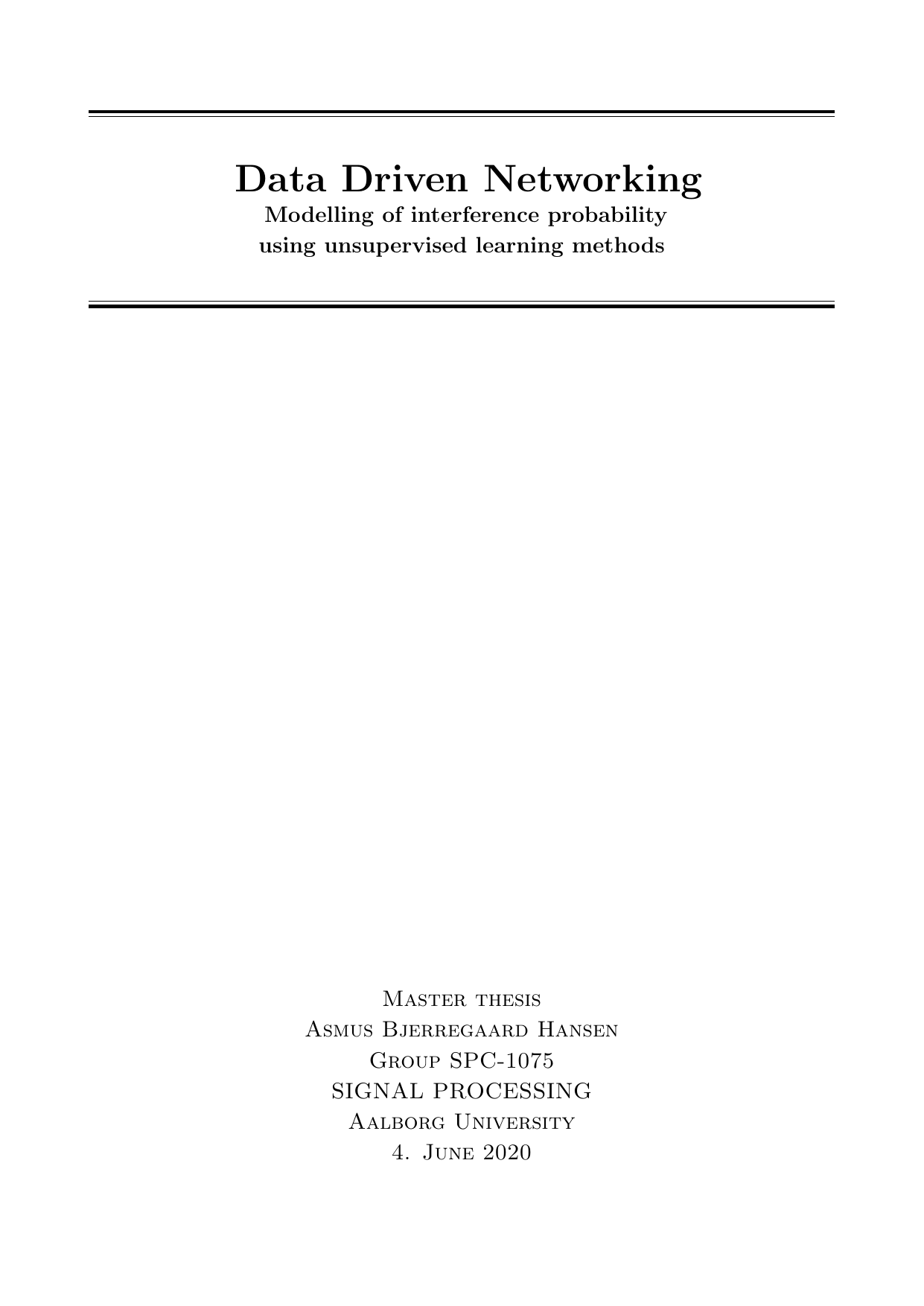
Data Driven Networking - Modelling of interference probability using unsupervised learning methods
Author
Term
4. term
Education
Publication year
2020
Submitted on
2020-05-28
Pages
83
Abstract
In this thesis, a method for finding the parameters to model interference probability in a wireless channel, using the ALOHA model, is presented. For extraction of the model parameters, an algorithm which relies on a recording of interference in the wireless channel is proposed. The algorithm computes and segments the recording spectrograms to extract the parameters of individual transmission and clusters these to find the dominating interference sources in the channel. Using simulated data the parameter estimate errors are found in different congestion scenarios. For 2% congestion 92.41%, 57.57% and 15.31% of the interference transmissions is found with power levels −60dBm/Hz, −75dBm/Hz and −90dBm/Hz respectively. The fraction of mid and low powered transmissions found depends on the level of congestion in the channel. Finally, a test on real-world data quantifies the amount of interference that the algorithm is capable of extracting.
In this thesis, a method for finding the parameters to model interference probability in a wireless channel, using the ALOHA model, is presented. For extraction of the model parameters, an algorithm which relies on a recording of interference in the wireless channel is proposed. The algorithm computes and segments the recording spectrograms to extract the parameters of individual transmission and clusters these to find the dominating interference sources in the channel. Using simulated data the parameter estimate errors are found in different congestion scenarios. For 2% congestion 92.41%, 57.57% and 15.31% of the interference transmissions is found with power levels −60dBm/Hz, −75dBm/Hz and −90dBm/Hz respectively. The fraction of mid and low powered transmissions found depends on the level of congestion in the channel. Finally, a test on real-world data quantifies the amount of interference that the algorithm is capable of extracting.
Keywords
Documents
